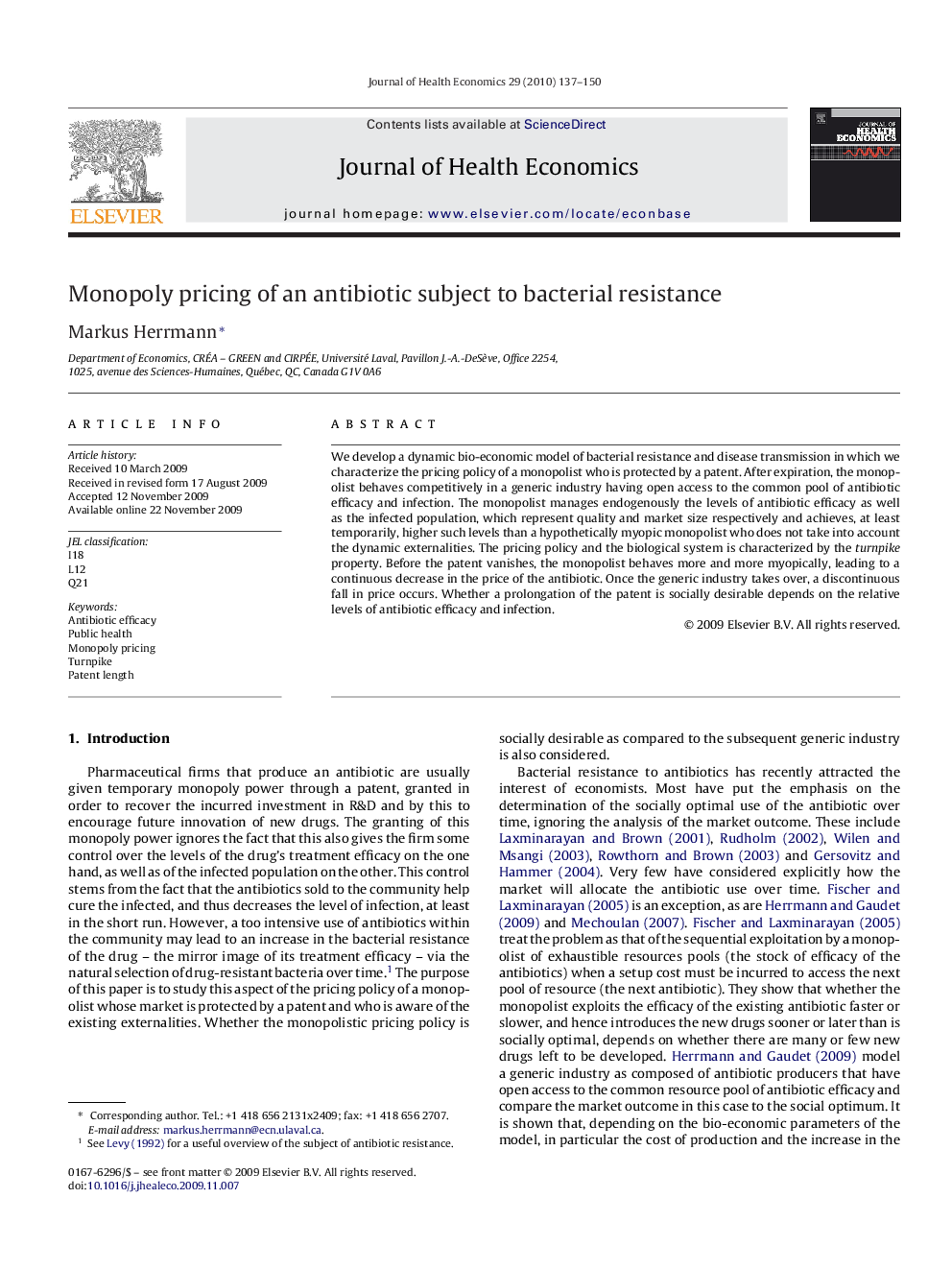| Article ID | Journal | Published Year | Pages | File Type |
|---|---|---|---|---|
| 961945 | Journal of Health Economics | 2010 | 14 Pages |
Abstract
We develop a dynamic bio-economic model of bacterial resistance and disease transmission in which we characterize the pricing policy of a monopolist who is protected by a patent. After expiration, the monopolist behaves competitively in a generic industry having open access to the common pool of antibiotic efficacy and infection. The monopolist manages endogenously the levels of antibiotic efficacy as well as the infected population, which represent quality and market size respectively and achieves, at least temporarily, higher such levels than a hypothetically myopic monopolist who does not take into account the dynamic externalities. The pricing policy and the biological system is characterized by the turnpike property. Before the patent vanishes, the monopolist behaves more and more myopically, leading to a continuous decrease in the price of the antibiotic. Once the generic industry takes over, a discontinuous fall in price occurs. Whether a prolongation of the patent is socially desirable depends on the relative levels of antibiotic efficacy and infection.
Related Topics
Health Sciences
Medicine and Dentistry
Public Health and Health Policy
Authors
Markus Herrmann,
